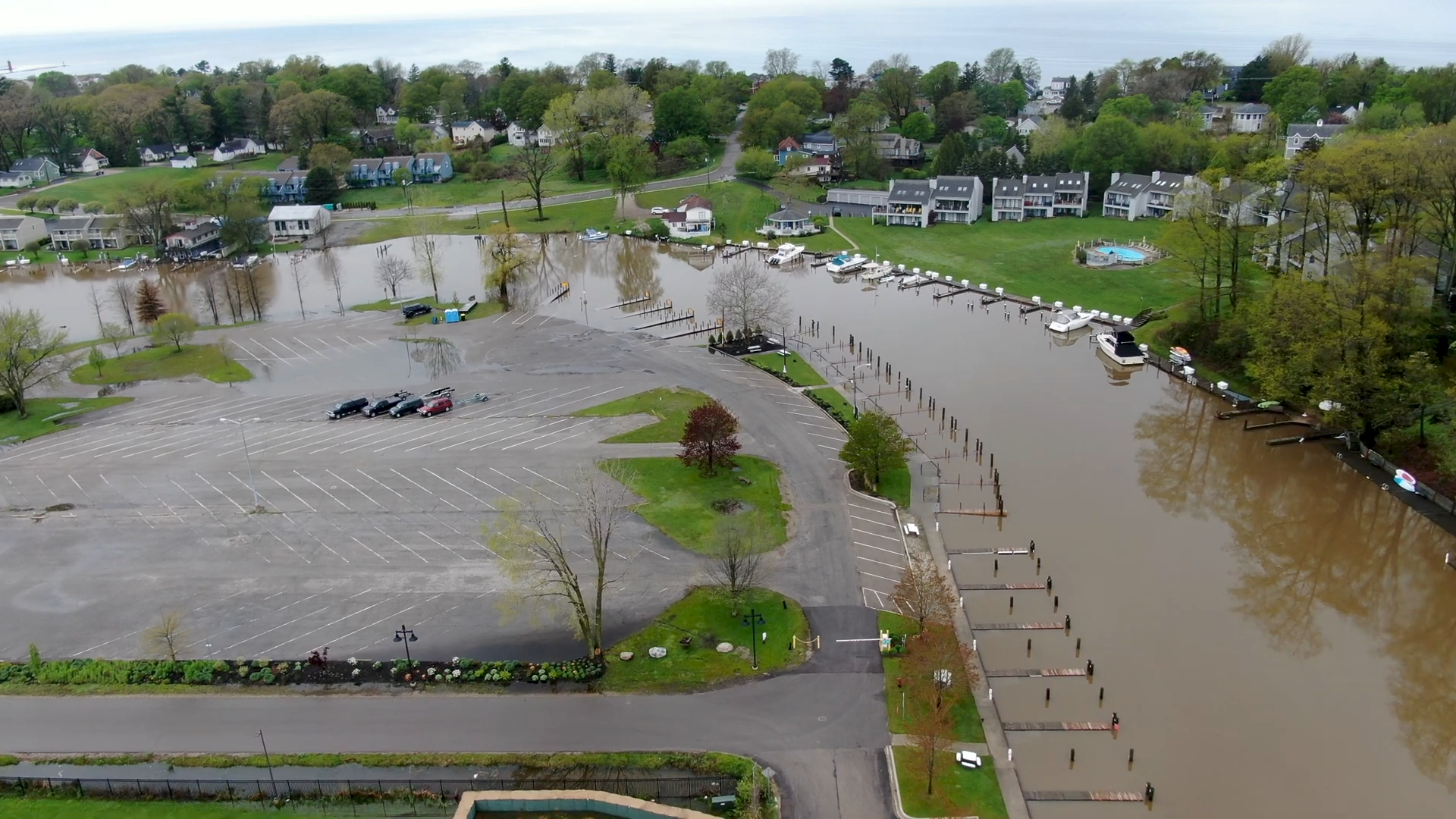
The summer of 2023 saw rainstorms that caused extreme flooding across the Great Lakes.
Cities like Cleveland, Chicago and Duluth were all affected this year. Amid rising concerns over the increasing frequency and severity of flooding in the Great Lakes region, a new study unveils crucial insights into each state’s preparedness. The University of Michigan analysis shows where six of the states are in terms of preparedness, as well as the challenges and areas where innovative solutions are needed.
Broken up into four categories, each state was ranked based on information, planning guidance, regulations and standards, and funding and financing. The final scores were tallied with New York at 33, Minnesota at 30, Michigan at 18, Wisconsin at 17, Illinois at 13 and Indiana at 10.
Sarah Hughes, a policy expert at the University of Michigan School for Environmental Sciences, said she suspects some places have a higher score than others because they have more financing that goes toward environmental programs. For example, through other projects and collaborations she’s worked on, she’s come to learn that Minnesota’s Department of Natural Resources is really well-funded.
“I would say my expectation for states is that there should be an agency who has this as their mandate, because sometimes some of these issues fall through cracks,” Hughes said. “If it’s not a particular agency’s responsibility, if that requires coordination between DOT [Department of Transport] and DNR [Department of Natural Resources] it’s nobody’s central priority.”
According to Apostolis Sambanis, who specializes in environmental and occupational health sciences and is an expert in emergency management and resiliency planning, Illinois has good environmental funding, though a lot has gone to decarbonization efforts.
He also noted that part of the issue is exactly what Hughes was saying — it’s a coordination issue between different departments. Developing a resilience officer at the state level would help, he said, by allocating more funding to help flood mapping so people can understand the issues throughout the state, and then developing funding sources to redesign developed areas.
“Most people don’t realize a lot of the floodplain maps that were developed by the government, they were done years and years ago, and they’re not updated nearly enough,” Sambanis said. “For example, as you develop an urban area, things change in the way the water is going to be diverted. So, it’s not constantly updated, like it should be, because there’s just not enough funding and resources.”
Sambanis is a professor and program director at the University of Illinois Chicago’s School of Public Health. Another thing he hopes the state might implement is a better flood communication plan, so people can be notified if they are in a newly developed floodplain. Another idea is porous concrete, that acts as a sponge unlike regular concrete which pushes the water out and away adding to flooded infrastructure.
On a positive note, he said the city of Chicago has done some things to mitigate flooding. The deep tunnel project, also known as the Tunnel and Reservoir Plan, has been a major development. Huge tunnels were built underneath the city, which take a lot of that water away during flash flooding and other events, and that dumps into quarries around the suburbs.
“A lot of times the issues we’re dealing with have as much to do with the way we’ve designed our communities, land use, stormwater systems and how those are doing when we have these big rain events,” said Hughes, who is one of authors of the study. “And rain events are getting larger, and stormwater systems and land use patterns aren’t necessarily well designed for these larger storms. They are getting old and overwhelmed.”
There are two types of floods that can impact this region, according to Hughes. Pluvial flooding is usually in more urban areas, and is known as stormwater flooding. Riverine or fluvial flooding can happen around any kind of river, not just large ones like the Mississippi, but the smaller ones that lead from the lakes.
She reiterated how flooding is not just a climate-related challenge or infrastructure challenge, but an equity challenge as well.
“It’s pretty critical for the future of our communities in the Great Lakes that we get a handle on flooding and flood risk, and do it in an equitable way,” Hughes said. “That’s going to really take states and communities working together, by communities I mean, state and local governments working together.”
Catch more news at Great Lakes Now:
Mapping the Great Lakes: Flood risk
Featured image: Aerial shot of South Haven flooding. (Great Lakes Now Episode 1016)
1 Comment
-
Chicago has been flooded TWICE – recently – and people questioned MASSIVE expenditures




